We may receive a commission when you use our affiliate links. However, this does not impact our recommendations.
I’ve long been fascinated by legends involving old chairmakers. Here in Kentucky we had Chester Cornett, an enigmatic bearded maker of the wildest ladderbacks and rockers I’ve seen. In Indiana we had a chairmaker in the southern part of the state who in the early 20th century made ladderbacks with a woven seat that look incredibly modern.
In Australia, they have the “Jimmy Possum” chair. Reader Bradley van Luyt sent me a link to this interesting television story on the chair, and so I started digging a little deeper.
Here’s the Cliff Notes version of the legend: Jimmy Possum was a bearded chairmaker, possibly aboriginal, who lived in a stump and made these chairs for sale in the late 19th century. Lots of people have debated whether Jimmy Possum was a real man or more of a Hoop Snake or Drop Bear from the Australian imagination.
If you want to read more about these investigations, check out these links:
To my eye, the chair looks a lot like an Irish stick chair with some interesting variations. The most unusual part is the role of the legs in the chair’s structure. Take a look at the legs. They pass through the seat to become the stumps for the armrests. The legs are tapered so that the seat simply wedges onto them. And, like a Windsor or Welsh chair, the more you sit on the chair the tighter the joints become.
Many of the accounts I’ve read indicate these chairs are shaved and not turned on a lathe. So the legs were likely roughed out with a drawknife and finished with a shave or knife. Some of these chairs suggest the holes in the seat were burned out instead of bored. Two of the back spindles also intersect the armrests, adding to the structure without adding components.
Whether Jimmy Possum is real or not, this style of chair is compelling and is a fascinating footnote in the history of vernacular chairs.
And, of course, now I want to build one.
— Christopher Schwarz
Here are some supplies and tools we find essential in our everyday work around the shop. We may receive a commission from sales referred by our links; however, we have carefully selected these products for their usefulness and quality.



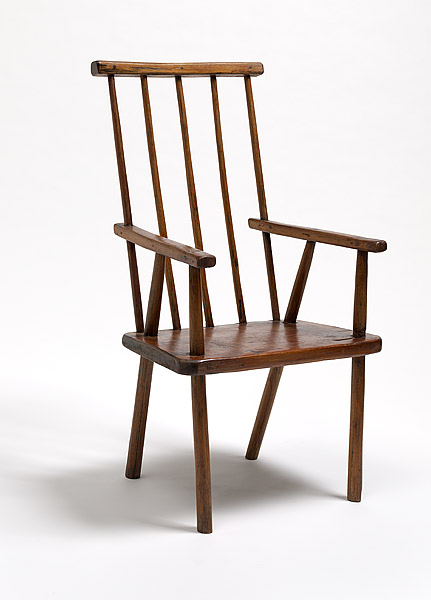
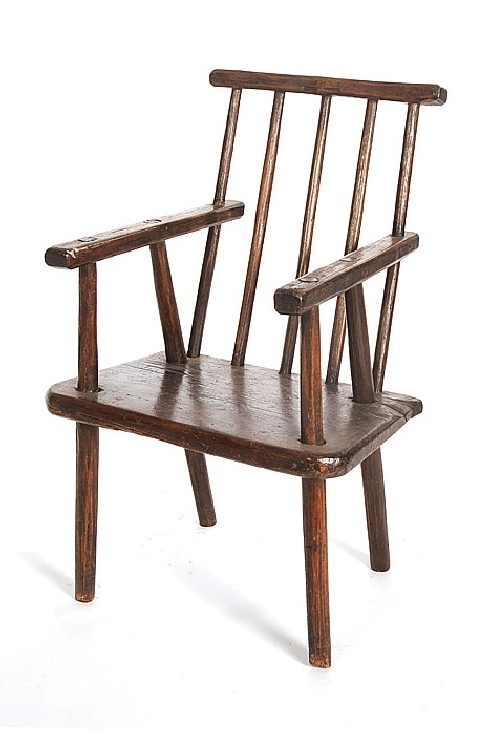
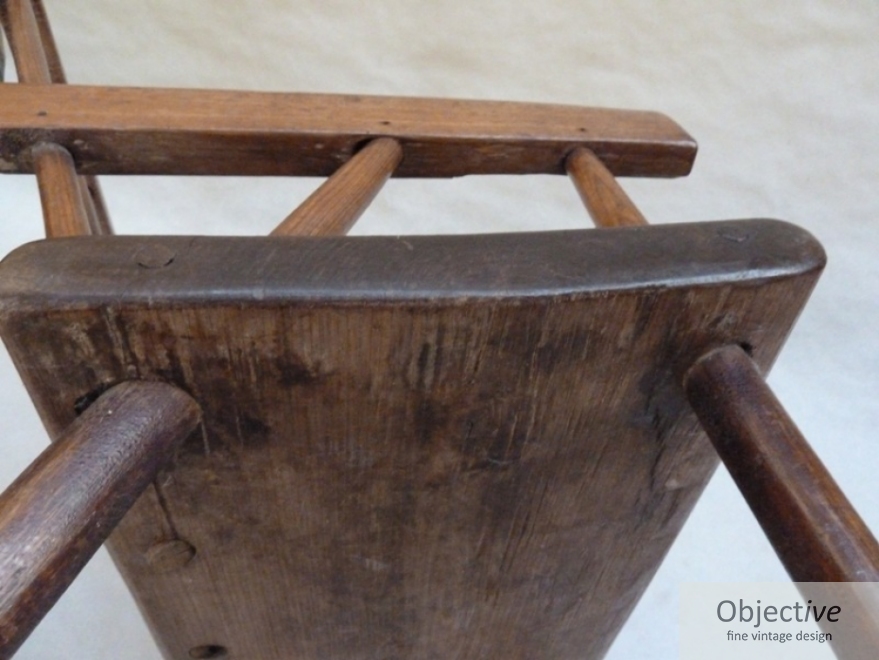




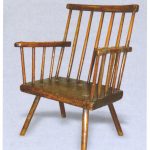
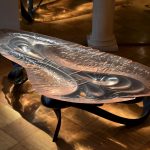
If Jimmy Possum is not real, then, who made the chairs?
This chair has a particular virtue. Stick chairs of all kinds are most subject to fore and aft stress caused primarily by my dragging and bumping the chair when seating and rising, particularly at table. listen to them. Examining old stick chairs will often evidence more loose and failed joints in the fore and aft direction. This is not going to happen with these powerful side frame trusses.
Hi Chris
Great article on the Jimmy Possum story.
Mike Epworth and I have a page on FB dedicated to this Australian vernacular chair tradition and would happy to share the journey to discover more about Jimmy Possum and the tradition handed down though some of the local families in Tasmania’s north particularly.
Jimmy Possum Appreciation Society FB
https://m.facebook.com/groups/2087604018130375?view=info&ref=bookmarks#!/notifications.php?refid=8
Kind regards
Bronwyn
Well of course, now, you HAVE to make one, or twenty.
Dang it! I probably will not sleep well until I can build this chair!
I built one of these last year after I saw a picture in an Australian Chair Book recommended by Bern Chandley, a fine Australian chair maker. You can see a picture of the finished chair on my InstaGram account at bwwoodcraft if you like. If you want any tips, let me know. I’ve got all the dimensions and angles worked out already. Seems like you and I are on the same bandwidth! First I found the Welsh stick chair – then you built it. Now the Jimmy Possum chair – I can guess what your next chair will be as I’ve already found mine…but I think I’ll wait to see if I’m right! Unless you ask very nicely, of course! PS. Loving the Roman Workbench book.
Cool! And it looks like the only angles are the rake of the rear legs and back spindles. No splay and vertical front legs? Should make it pretty straight forward to build. In the second picture, are those pegs through the end grain of the seat into the legs?
The article on Chester Cornett was an interesting read! He had a difficult life.